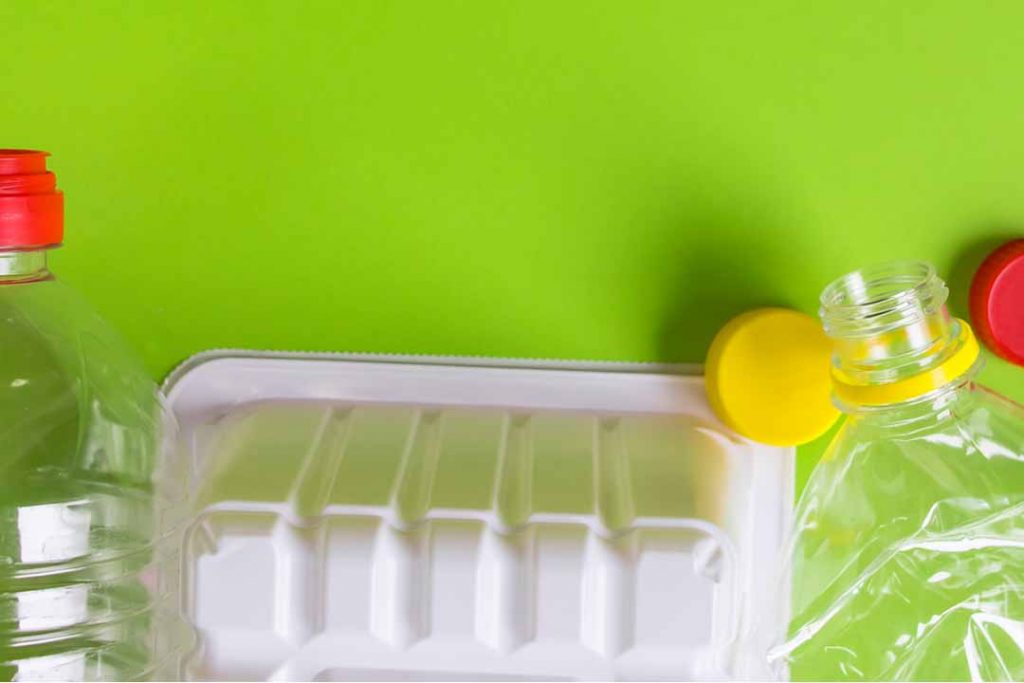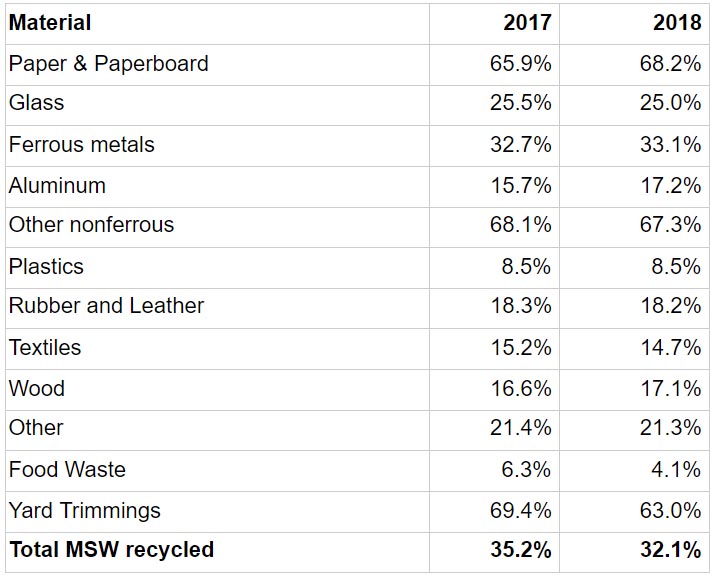
Recently released data shows the U.S. plastics recycling rate held steady at 8.5% in 2018. | nelladel/Shutterstock
The U.S. recycling and composting rate declined significantly in 2018, but certain materials fared better than others, according to figures from the federal government. The drop was partially due to a change in how the rate was calculated.
The U.S. EPA this week published national waste and recycling data for the 2018 calendar year. The agency found the U.S. generated 292 million short tons of waste, of which 69 million tons were recycled and 25 million tons were composted.
Together, those materials recovery efforts notched a 32.1% recycling and composting rate, down substantially from 35.2% in 2017. Without including composting, the recycling rate was 23.6%, down from 24.9%.
The EPA reported that 6.04 billion pounds of U.S. plastic was recycled in 2018, out of 71.36 billion pounds of waste generated, equating to an 8.5% recycling rate.
The agency previously reported 5.92 billion pounds of plastic recycled in 2017, out of 70.74 billion pounds generated, resulting in a recycling rate calculation of about 8.4%. In the new report, the 2017 figures have been updated to indicate 6.00 billion pounds of plastic recycled that year, out of 70.82 billion pounds generated. That raises the 2017 rate to 8.5% and makes for a flat recycling rate year over year.
As for the reason for the drop in the overall recycling and composting rate, the EPA reported far greater waste generation in 2018, outpacing modest recycling progress. However, part of the decline is due to how EPA measured food waste generation, a category that increased by more than 22 million tons alone. The EPA noted that for the 2018 report, it considered a wider scope of food waste activities “to include additional generators and management pathways.”
The report includes a new category of alternative food waste management pathways, adding 17.7 million tons to generation. Food diverted in that category made up 6.1% of overall generation.
MSW generation hit 292.4 million tons in 2018. That was up nearly 24 million tons from the year before. By contrast, the 2017 generation figure was up just 6.6 million tons from the prior year.
Meanwhile, the amount of material recycled in 2018 increased by just 2 million tons.
“Although more tons were recycled in 2018 than ever before, the recycling rate decreased to the lowest levels since 2006,” EPA reported.
The overall recycling rate decline came amid a period of upheaval in global recycling markets. China in 2018 began tightly restricting imports of recyclables as part of its National Sword campaign, impacting pricing and recovery rates.
According to the EPA, the overall rate was also affected by a decrease in composting, which dropped from 27.0 million tons in 2017 to 24.9 million tons in 2018.
The following are the recycling rates by material:

More stories about data
- ADS recycled plastic purchase share sinks to 3-year low
- Fires at recycling sites on track to reach record high
- Ameripen details progress, obstacles for PCR


